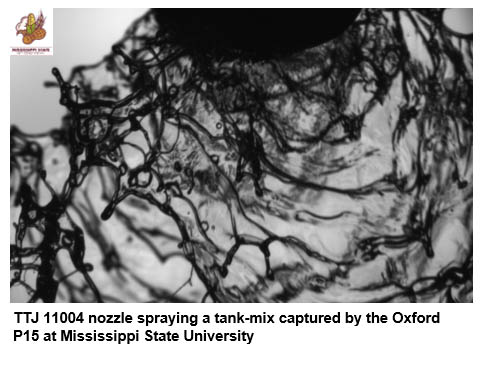Research
Corn
Early Season Programs in Corn
Research was conducted to assess PRE and Early-POST programs in corn to manage tough-to-control weeds in Mississippi. Plots were sprayed and assessed for weed control of yellow nutsedge, prickly sida (teaweed), and broadleaf signalgrass.
Variety: DKC 70-27 planted on April 5th, 2018 at 28,000 seeds / acre on 38 inch spacing
Location: Black Belt Experiment Station – Brooksville, MS
Application Info:
PRE applied on April 13th, 2018 at 15 GPA and 40 PSI with ULD 120015 nozzles
Early POST (corn < 11") applied on May 7th, 2018 – 15 GPA, 40 PSI, ULD 120015s
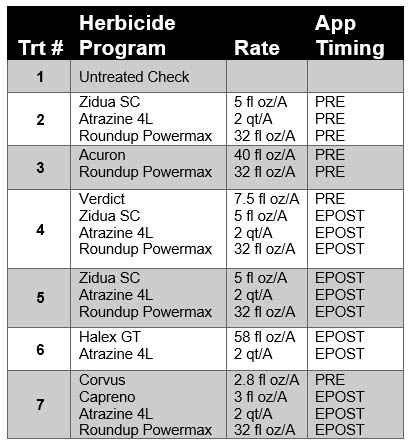
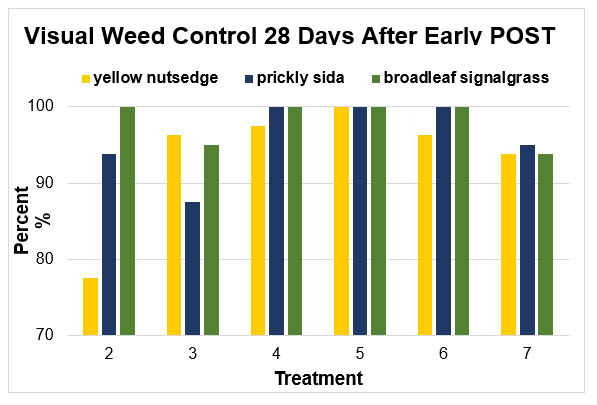
Another early season program assessed PRE and Early-POST programs in corn for barnyardgrass, horsenettle, yellow nutsedge, and prickly sida (teaweed) control.
Variety: DKC 70-27 planted on April 5th, 2018 at 28,000 seeds / acre on 38 inch spacing
Location: Black Belt Experiment Station – Brooksville, MS
Application Info:
PRE applied on April 13th, 2018 at 15 GPA and 40 PSI with ULD 120015 nozzles
Early POST (corn < 11") applied on May 7th, 2018 – 15 GPA, 40 PSI, ULD 120015s
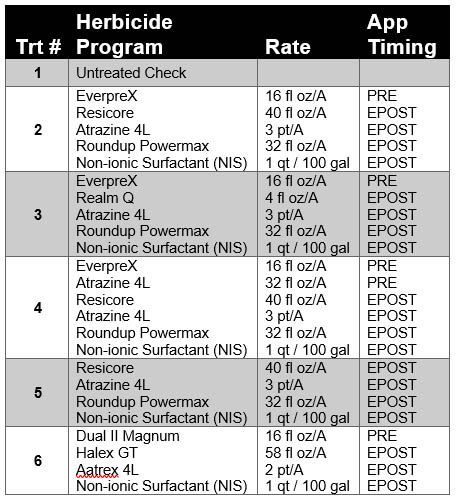
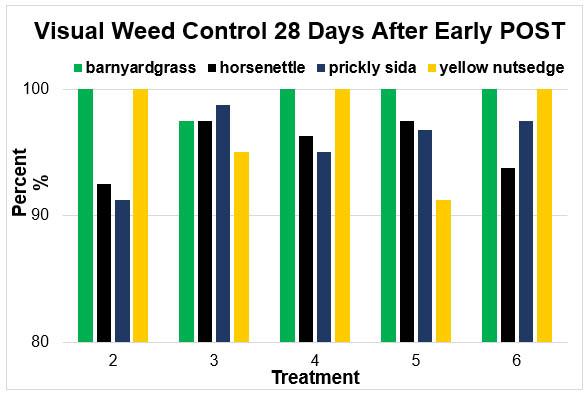
Cotton
Weed Control Programs for Enlist Cotton
Research was conducted to assess PRE and POST programs for Enlist cotton to manage tough-to-control weeds in Mississippi. Plots were sprayed and assessed for weed control of broadleaf species (pitted morningglory, prickly sida (teaweed), hemp sesbania, and sicklepod) and grass species (barnyardgrass, broadleaf signalgrass, and witchgrass).
Variety: PHY 490 W3FE planted on May 10th, 2018 at 44,000 seeds / acre on 38 inch spacing
Location: Black Belt Experiment Station – Brooksville, MS
Application Info:
PRE applied on May 11th, 2018 at 15 GPA and 40 PSI with ULD 120015 nozzles
Early POST applied on June 4th, 2018 – 15 GPA, 40 PSI, ULD 120015s
Mid POST applied on June 25th, 2018 – 15 GPA, 40 PSI, ULD 120015s
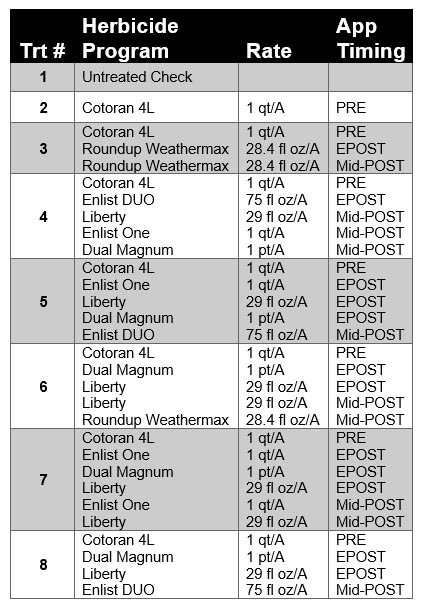
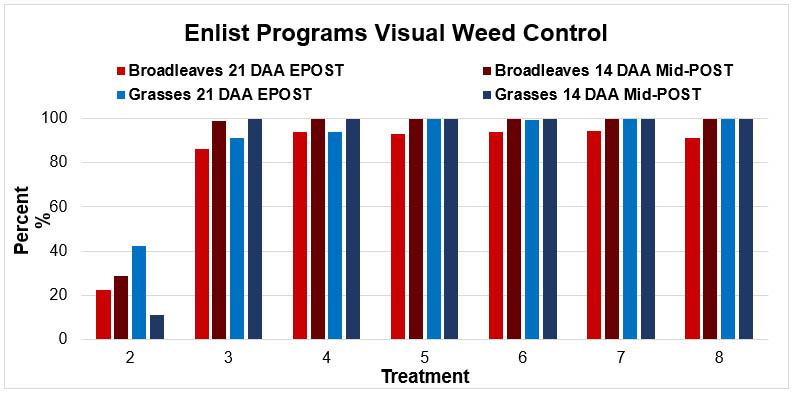
Peanut
Anthem Flex Tolerance in Peanut
A field trial was conducted in Mississippi as part of a multi-state project to assess peanut tolerance to Anthem Flex (pyroxasulfone + carfentrazone) applied at three different timings: PRE, At-Cracking, and Early POST at two different rates, 2 and 4 fl oz/A. Currently Anthem Flex is not registered for use in peanut, but research was conducted to see if Mississippi growers would have any problems if it were.
Variety: Georgia 06-G planted on May 21st, 2018 at 6 seeds / ft on 38” spacing
Location: RR Foil Plant Science Research Center – Starkville, MS
Application Info:
PRE application on May 22nd, 2018 at 12 GPA and 30 PSI with TTI 110015 nozzles
At-Cracking applied on May 29th, 2018 – 12 GPA, 30 PSI, TTI 110015s
Early POST applied on June 18th, 2018 – 12 GPA, 30 PSI, TTI 110015s
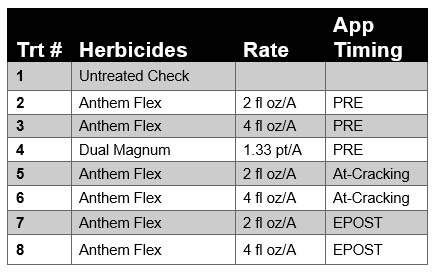
Harvest:
Plots were dug on October 24th, 2018
Plots were harvested on November 28th, 2018
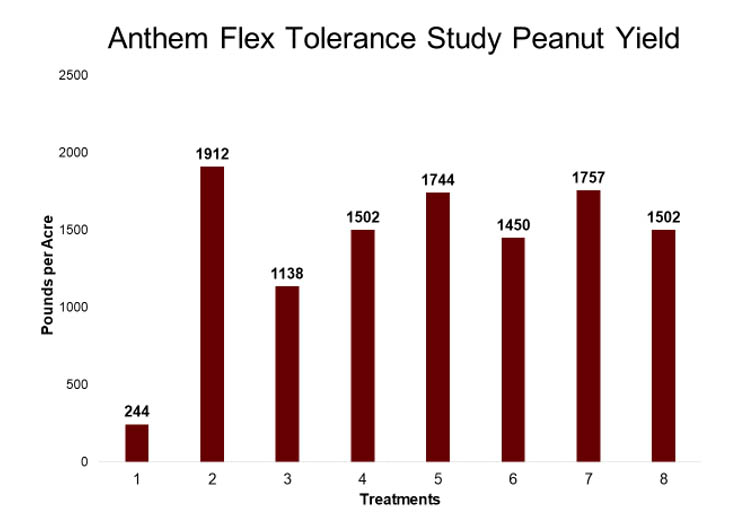
There were no statistical differences among treatments from applications of Anthem Flex at either rate or at any timing. Plots received 6.5 inches of rainfall between digging and harvest, leading to significant pod loss, and thus lower than expected yields. While Anthem Flex is not labeled in peanut, our data suggests that if labeled, Mississippi growers would have no potential losses due to plant injury from these applications.
Wheat
Cutleaf Evening Primrose and Winter Annual Broadleaf Control Programs for Wheat
Research was conducted to assess POST programs to control cutleaf evening primrose (Oenothera laciniata) and other problematic winter annual weeds like roughseed buttercup, tansy mustard, flixweed, henbit, and field pennycress in wheat. This research was conducted in Mississippi and Oklahoma. Plots were sprayed and assessed for weed control of winter annual broadleaf species (cutleaf evening primrose, roughseed buttercup, tansy mustard, flixweed, henbit, and field pennycress).
Variety:
MS: ‘TN 902’ planted on October 22nd in Newton, MS and October 29th in Brooksville at 115 pounds / acre
OK: ‘Iba’ planted on October 23rd in Lahoma, OK at 80 pounds / acre
Location:
Coastal Plain Experiment Station – Newton, MS
Black Belt Experiment Station – Brooksville, MS
North Central Research Station – Lahoma, OK
Application Info:
Applications when weeds had 2-4” diameters on Dec 5th, 2018 at Newton and Lahoma and on Dec 6th in Brooksville at 15 GPA and 40 PSI with AIXR 110015 nozzles
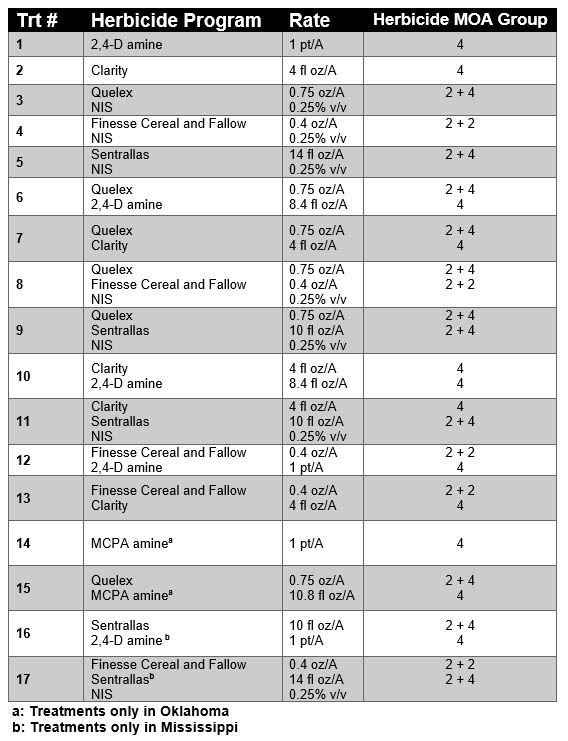
Harvest:
Plots were dug on October 24th, 2018
Plots were harvested on November 28th, 2018
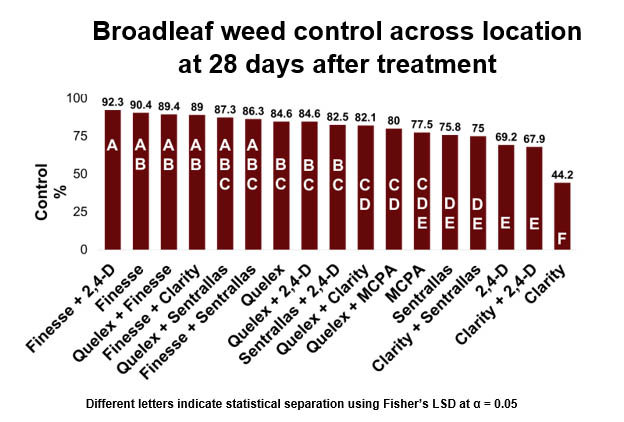
Finesse containing treatments resulted in the highest broadleaf weed control, with all treatments resulting in weed control above 85%. Quelex when applied with another Group 2 herbicide (Finesse or Sentrallas) resulted in broadleaf weed control at or above 87%. Broadleaf weed control was lower with synthetic auxins alone like 2,4-D, Clarity (dicamba), or the combination of 2,4-D + Clarity. Yields from this study were taken, but there were no statistical separations. Both Mississippi locations experienced heavy headscab, which negated results from the weed control study. This project is being replicated across both locations in Mississippi in 2019-2020 and Oklahoma too. A more resistant to headscab wheat variety is being planted in the MS locations to ensure useful data is achieved this year. It would be expected that the highest weed control treatments would result in the highest yields with all conditions being equal.
Spray Application Research
Droplet measurement at Mississippi State
The weed science research program recently acquired an Oxford Lasers, P15 which can measure the droplet size and droplet velocity of sprays. Further, the Oxford P15 can also capture images of the spray which can answer additional questions about nozzles, adjuvants, pesticides, and anything related to the spray application. Droplet measurements will be made available on this site, so check back in coming months as we get them posted. If you have specific questions about the system or want to request commercial testing of a product, send us an email and we can get that arranged.
Also, for growers, if you want to request a measurement be taken for a given nozzle, pressure, and tank-mix, please send us an email to the address below.
Email connor.ferguson@msstate.edu

